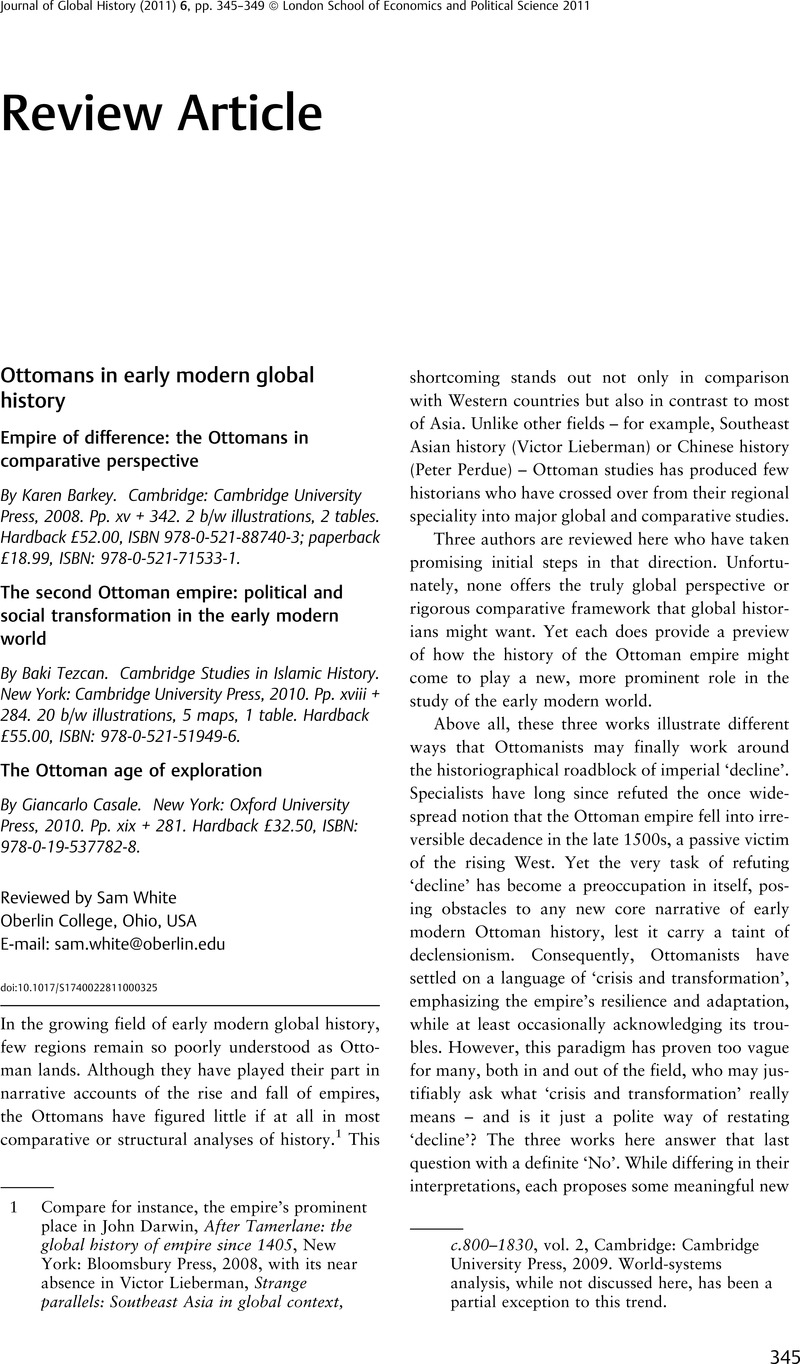No CrossRef data available.
Article contents
Ottomans in early modern global history
Published online by Cambridge University Press: 13 June 2011
Abstract

- Type
- Review Article
- Information
- Copyright
- Copyright © Cambridge University Press 2011
References
1 Compare for instance, the empire’s prominent place in Darwin, John, After Tamerlane: the global history of empire since 1405, New York: Bloomsbury Press, 2008Google Scholar, with its near absence in Lieberman, Victor, Strange parallels: Southeast Asia in global context, c.800–1830, vol. 2, Cambridge: Cambridge University Press, 2009CrossRefGoogle Scholar. World-systems analysis, while not discussed here, has been a partial exception to this trend.
2 See e.g. Alan Mikhail, ‘An irrigated empire: the view from Ottoman Fayyum’, International Journal of Middle East Studies 42, 4, 2010, pp. 571.
3 As explored in the work of Oktay Özel – see most recently Özel, ‘The reign of violence: the Celâlis (c.1550–1700)’, in Christine Woodhead, ed., The Ottoman world, London: Routledge, forthcoming 2011.
4 Eliana Balla and Noel D. Johnson, ‘Fiscal crisis and institutional change in the Ottoman empire and France’, Journal of Economic History, 69, 3, 2009, pp. 809–45; and Wantje Fritschy, ‘State formation and urbanization trajectories: state finance in the Ottoman empire before 1800, as seen from a Dutch perspective’, Journal of Global History, 4, 3, 2009, pp. 405–28.
5 See e.g. Tonio Andrade, ‘Beyond guns, germs, and steel: European expansion and maritime Asia, 1400–1750’, Journal of Early Modern History, 14, 1, 2010, pp. 165–86.
6 A few authors outside the field have recently taken steps in this direction – see e.g. Perdue, Peter C. and İslamoğlu-İnan, Huri, eds., Shared histories of modernity: China, India, and the Ottoman Empire, London: Routledge, 2009Google Scholar; and Dale, Stephen F., The Muslim empires of the Ottomans, Safavids, and Mughals, New Approaches to Asian History, Cambridge: Cambridge University Press, 2010Google Scholar.




